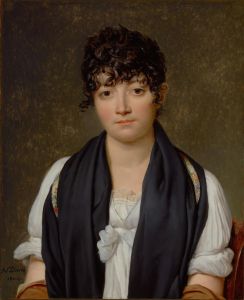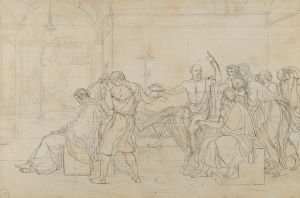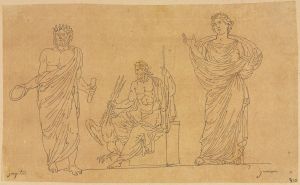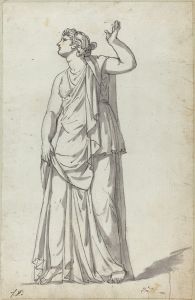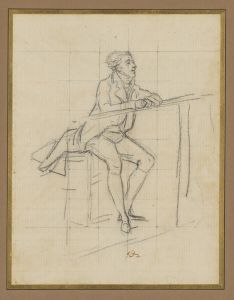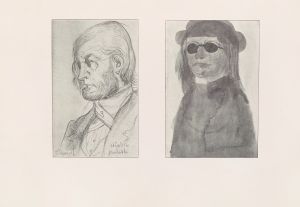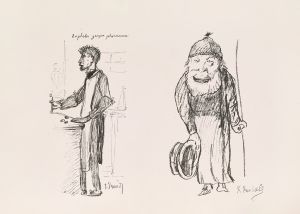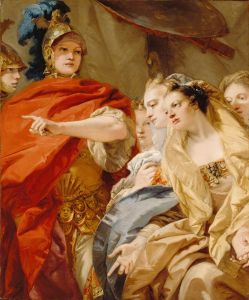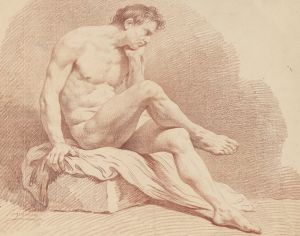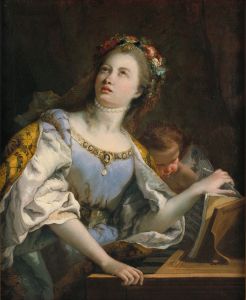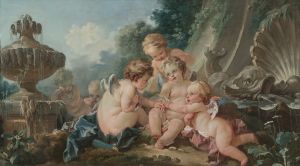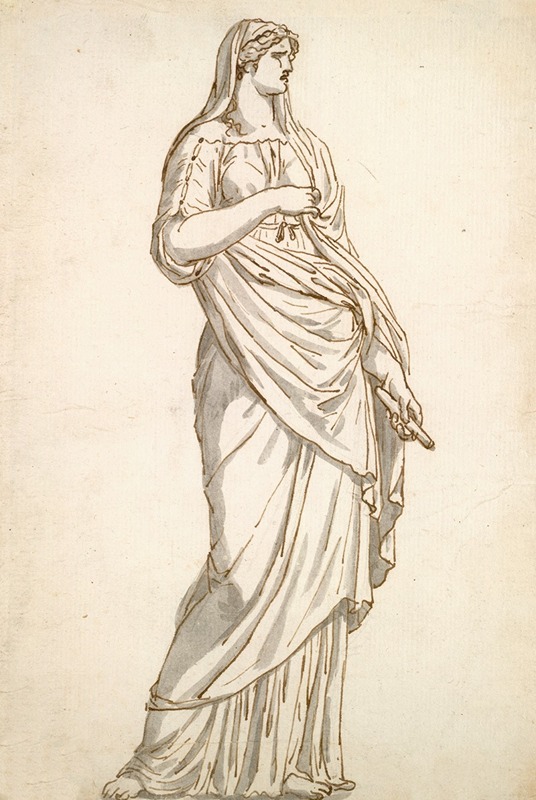
Study of the Sabine Statue from the Villa Medici
A hand-painted replica of Jacques Louis David’s masterpiece Study of the Sabine Statue from the Villa Medici, meticulously crafted by professional artists to capture the true essence of the original. Each piece is created with museum-quality canvas and rare mineral pigments, carefully painted by experienced artists with delicate brushstrokes and rich, layered colors to perfectly recreate the texture of the original artwork. Unlike machine-printed reproductions, this hand-painted version brings the painting to life, infused with the artist’s emotions and skill in every stroke. Whether for personal collection or home decoration, it instantly elevates the artistic atmosphere of any space.
Jacques-Louis David, a prominent French painter in the Neoclassical style, is known for his historical and classical subjects. One of his lesser-known works is "Study of the Sabine Statue from the Villa Medici." This piece is a testament to David's dedication to classical antiquity and his meticulous approach to studying and replicating classical art forms.
Jacques-Louis David was born in 1748 in Paris and became one of the most influential artists of his time. He was a key figure in the Neoclassical movement, which sought to revive the classical art and culture of ancient Greece and Rome. David's works often reflect his interest in classical themes, and he was known for his rigorous study of classical sculptures and architecture.
The "Study of the Sabine Statue from the Villa Medici" is a drawing that exemplifies David's commitment to classical art. The Villa Medici, located in Rome, was an important center for artists and scholars studying the classical world. It housed numerous classical sculptures, which served as inspiration for many artists, including David. The Sabine statue, in particular, was a subject of interest due to its historical and artistic significance.
David's study of the Sabine statue demonstrates his skill in capturing the essence of classical sculpture. His drawing is characterized by precise lines and attention to detail, reflecting the influence of classical art on his work. This study was likely part of David's broader efforts to understand and replicate the techniques of ancient sculptors, which he would later incorporate into his paintings.
The Sabine women were a significant subject in Roman history and art, often depicted in stories of the founding of Rome. The most famous narrative involving the Sabines is the "Rape of the Sabine Women," a legendary episode in which Roman men abducted women from the neighboring Sabine tribe to take as wives. This story has been a popular subject in art, symbolizing themes of conflict, reconciliation, and the founding of civilizations.
David's interest in the Sabine statue aligns with his broader artistic goals of exploring themes of heroism, sacrifice, and civic virtue, which were central to his work during the French Revolution. His studies of classical sculptures were not merely academic exercises but were integral to his development as an artist who sought to convey moral and philosophical messages through his art.
While the "Study of the Sabine Statue from the Villa Medici" is not as widely recognized as some of David's other works, such as "The Death of Socrates" or "The Oath of the Horatii," it remains an important piece that reflects his dedication to classical ideals. This study is a valuable example of how David's engagement with classical art informed his larger body of work, contributing to his reputation as a master of Neoclassical painting.
In summary, Jacques-Louis David's "Study of the Sabine Statue from the Villa Medici" is a significant work that highlights his commitment to classical art and his skill in drawing. It serves as a testament to his influence in the Neoclassical movement and his ability to draw inspiration from the art and history of ancient Rome.





